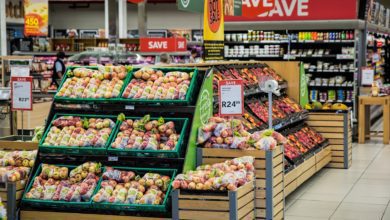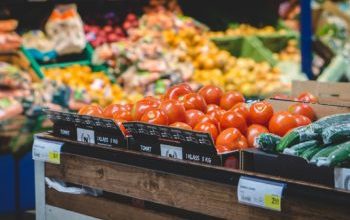Inflation jumps to 3.5% in April
The rise in the annual rate reflected large upward effects from gas and electricity, which resulted from the raising of the Office of Gas and Electricity Markets (Ofgem) energy price cap in April 2025

Register to get 1 free article
Reveal the article below by registering for our email newsletter.
Want unlimited access? View Plans
Already have an account? Sign in
Inflation increased to 3.5% in April, according to the latest figures for the Office for National Statistics (ONS), which it blamed on a “significant increase” in household bills.
The 12-month inflation rate for housing and household services was 7.0% in April 2025, up from 5.1% in March. On a monthly basis, prices rose by 1.8% in April 2025, compared with a fall of 0.1% a year ago.
The rise in the annual rate reflected large upward effects from gas and electricity, which resulted from the raising of the Office of Gas and Electricity Markets (Ofgem) energy price cap in April 2025.
Prices of water and sewerage also rose by 26.1% in the month to April 2025, compared with a rise of 8.1% a year ago. This marked the largest price increase since at least February 1988.
The price of transport also was a main contributor to the rise in April. During the month, prices in the transport division rose by 3.3% in the 12 months to April 2025, up from 1.2% in the 12 months to March.
Overall prices in the recreation and culture division also rose by 3.1% in the 12 months to April 2025, up from 2.4% in the 12 months to March. On a monthly basis, prices rose by 1.2% in April 2025, compared with a rise of 0.5% a year before.
A major reason for the rise in the annual rate was because of higher inflation for foreign holidays, as the period fell within the Easter holidays for schoolchildren when prices are usually higher.
The overall increase in the inflation rate was partially offset by a downward effect from clothing and footwear. Prices fell by 0.4% in the 12 months to April 2025, compared with a rise of 1.1% in the 12 months to March (Figure 4). On a monthly basis, prices fell by 1.1% in April 2025, compared with a rise of 0.4% a year ago.
The largest downward effects came from garments for women, garments for infants, and footwear for women, as shops held holiday sales to celebrate the Easter period.
Commenting on the figures, Kris Hamer, Director of Insight at the British Retail Consortium, said: “Headline inflation accelerated in April as additional costs from rising National Living Wage and Employers’ NI costs filtered through to prices faced by consumers, as well as rising costs of utilities (energy, water and broadband). The jump in labour costs pushed up food inflation, which climbed above 3%.
“However, there was some good news for furniture and clothing shoppers as prices fell year on year, with retailers offered good promotions on summer apparel and electricals. Even with food prices rising overall, there were still deals to be had, with prices of dairy products such as milk, cheese and eggs falling on the month.”
He added: ““Rising inflation was inevitable following the wave of additional costs hitting employers, and particularly retailers who employ over 3 million people across the country. For months retailers have been warning that rising costs would lead to higher prices.
“To mitigate this, the government must now find ways to help reduce business costs and regulatory burden. It is imperative that its Employment Rights Bill targets unscrupulous employers and avoids burdening responsible businesses with additional costs which could put retail job numbers into reverse.”







